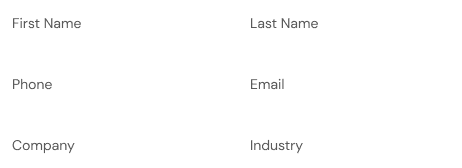
Tick-boxes and tokenism: what to avoid when creating a truly diverse workplace
‘Diversity and inclusion’ has become such a common turn of phrase that many companies, industries and publications simply shorten it to ‘D&I’. And yet, just because it’s commonly discussed, doesn’t mean that we’ve nailed it as a practice. This article from Forbes confirms that, today, global boardrooms continue to be male-dominated. They’re also 70% white. Clearly, our familiarity with diversity and inclusion isn’t enough to spark meaningful change.
A core problem with the corporate world’s current attitude to diversity and inclusion is that it’s treated as a numbers game. Like revenue, outgoings or headcount, too often we look at diversifying our hiring process as a target that needs to be met, rather than a culture that we need to adapt to and learn about. If we hire a select few for the sake of avoiding being ‘canceled’, then these people are never going to feel fully accepted and at home in our companies.This is sometimes referred to as ‘tokenism’.
While a company might believe they are doing good by trying to hire more diversely, tokenism can be detrimental to individuals from minority backgrounds. “Tokens have higher visibility than dominant members,” explain university researchers to Fast Company. “This heightened visibility can lead to performance pressures whereby tokens may have fears about making mistakes because their performance is being heavily scrutinized.”
Instead, companies need to be diving deeper into the culture of diversity and inclusion. If you imagine a business as a tree, diversity needs to run throughout the whole entity, from root to branch to leaf. Not be the burden of a handful of blossoms.
This might sound hypothetical, but there are a number of concrete actions you can take to begin seeing diversity and inclusion this way:
- Keep track of (and improve) how diverse your leadership teams and internal decision-makers are
- Ensure there is no pay gap between majority and minority employees
- Invest in and require all staff to complete regular cultural awareness training
- Run anonymous surveys so that your minority employees have the freedom to share any concerns around potential biases or problems
- Build inclusive language and practices into your brand, both internally and externally (this might include the use of pronouns in email sign offs, or allowing employees time off for religious holidays)
Lastly, there is nothing to fear from diversifying your business. On the contrary, you stand to benefit from a wealth of new ideas that cater to our increasingly conscious world.
At Remotify, we’re proud to have been nominated for the 2023 OA Outsourcing Impact Award for Diversity and Inclusion. Creating truly diverse, inclusive and - above all - happy places to work is our bread and butter. If you’d like to find out how we can help you achieve this, give our friendly team of experts a call today!
Spending Too
Much Time
Onboarding?
your remote hiring in the
Philippines, excellently.
Say Goodbye to High Costs!
Request Your Free Consultation Today andSave a Massive 70% on Your Workforce!

Ready to thrive in a remote-first work environment?


